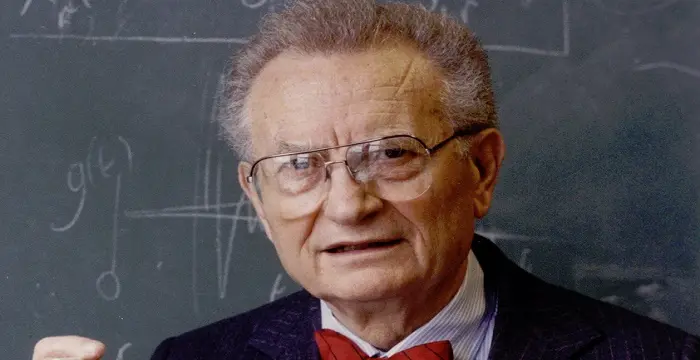
Sir Richard Stone - Cambridge University, Birthday and Family
Sir Richard Stone's Personal Details
Sir Richard Stone deserves a special place amongst contemporary economists
| Information | Detail |
|---|---|
| Birthday | August 30, 1913 |
| Died on | December 6, 1991 |
| Nationality | British |
| Famous | Cambridge University, Intellectuals & Academics, Economists |
| Spouses | Feodora Leontinoff, Giovanna Croft-Murray, Winifred Mary Jenkins |
| Universities |
|
| Notable Alumnis |
|
| Founder / Co-Founder |
|
| Birth Place | London |
| Gender | Male |
| Father | Gilbert Stone |
| Mother | Elsie |
| Sun Sign | Virgo |
| Born in | London |
| Famous as | Economist |
| Died at Age | 78 |
// Famous Economists
Bertil Gotthard Ohlin
Bertil Gotthard Ohlin was a famous Swedish economist. This biography profiles his childhood, family life & achievements.
Emily Greene Balch
Emily Greene Balch was an American economist, sociologist and pacifist who won the 1946 Nobel Peace Prize. This biography of Emily Greene Balch provides detailed information about her childhood, life, achievements, works & timeline.
Paul Samuelson
Nobel laureate Paul Anthony Samuelson is referred to as the ‘Father of Modern Economics’. This biography profiles his childhood, life, career, achievements and interesting facts about him.
Sir Richard Stone's photo
Who is Sir Richard Stone?
Sir John Richard Nicholas (Dick) Stone was an outstanding figure in postwar British applied econometrics. He was one of the pioneering architects of national income accounting and was amongst the first contemporary economists of his generation to distinctively blend theory and application in his approach to economic analysis. He was awarded the Nobel Prize in economics for his significant contributions to the empirical analysis of consumer behavior. His distinctive contribution was however to integrate national income into the double book-keeping format. This technique has been universally accepted as the best way to measure national income. Nowadays, he is often referred to as ‘the father of national income accounting’. A noble prize winner, Sir Richard Stone’s “Growth Project” created a remarkable macroeconomic model of the British economy. His tenure at the Department of Applied Economics, Cambridge, was instrumental in turning the institute into the best center for applied economics and became a hive attracting top notch economists from around the world.
// Famous Intellectuals & Academics
Bertil Gotthard Ohlin
Bertil Gotthard Ohlin was a famous Swedish economist. This biography profiles his childhood, family life & achievements.
Emily Greene Balch
Emily Greene Balch was an American economist, sociologist and pacifist who won the 1946 Nobel Peace Prize. This biography of Emily Greene Balch provides detailed information about her childhood, life, achievements, works & timeline.
Martin Buber
One of the greatest philosophers to have ever walked on earth, Martin Buber contributions to philosophy is a long-standing one. Explore all about his profile, childhood, life and timeline here.
Biography detail
Sir Richard Stone’s Childhood and Early Years
Sir Richard Stone was born in London on 30th August 1913. He was the only child of Gilbert and Elsie Stone. His school days were spent first at Cliveden Place Preparatory School and then at the Westminster School which he attended from 1926 to 1930. In 1930, Richard Stone’s father was appointed a High Court judge in Madras and, on the advice of his son’s headmaster he took Stone with him. So, Richard Stone had a year’s break in India between school and university.
Education
In 1931, Sir Richard Stone joined Cambridge as an undergraduate student, at his father’s old college, Gonville and Caius. This college was very reputed for its medicine and law departments. However, after two years of studying law he switched to economics. The college didn’t have an economist amongst its Fellows so for the weekly supervisions he was sent to Richard Kahn at King’s College. Not only was Kahn a brilliant theorist but he was a stimulating and encouraging supervisor. Amongst his other professors, Colin Clark who was a lecturer in statistics and who himself was deeply involved in the measurement of national income and Keynes were quite influential cementing his interest in economics.
His performance as an undergraduate student was quite stable unlike his schooling, and in 1935 he received his degree. Soon after, his college offered him a research studentship but he declined the opportunity as he felt that only two years of studying economics was not enough for doing research.
Professional Career
Sir Richard Stone left academics and found a job as a staff member at a firm of Lloyd’s broker. Although he was never really inclined for a business career he did learn a good deal about life from his brief encounter with the insurance world. This job was not so heavy so he could carry on with the kind of work that interested him. So, he spent much of his time with his first wife, who read economics at Cambridge, writing on economic subjects. He and his wife started a little monthly called ‘Trends’ which they distributed as a supplement to the periodical, ‘Industry Illustrated’ run by Colin Clark. In 1937, when Clark left for Australia, he bequeathed the task of running the monthly to Stone. So, following the trend started by Clark, he filled the monthly with indicators of British economic conditions: employment, output, consumption, retail trade, investment, foreign trade, prices and so on. Though ‘Trends’ was a small publication it didn’t fail to attract any attention.
Pre-War
In 1939, Richard Stone was asked to join the staff of the Ministry of Economic Warfare which had to be set up in the event of war. On 2 September he reported to duty when the war broke out and remained there for about nine months in the shipping and oil statistics section. In the summer of 1940 he was transferred to the central economic information service of the offices of the war cabinet where James Meade (a renowned British economist and a 1977 Nobel Prize winner) was preparing the groundwork for a survey of the country’s economic and financial situation and he wanted somebody to help him with the statistical side. The outcome of their joint work was much encouraged by Keynes and was amongst Britain’s first national accounts. These estimates were presented to the Parliament with the Budget of April 1941 and were followed by a number of papers setting out the authors’ ideas. Meade did not pursue the subject, but Stone did, and by the early 1950s his reputation was well established as the ‘Father of the System of National Accounts’. The System was adopted by the OEEC (later OECD) and the UN, which contributed to its universal acceptance.
Post-War
After the war was over in 1945, Stone returned to Cambridge and become the first director of the newly established Department of Applied Economics, created within the faculty of economics and politics at the instigation of Keynes. But before this he took a three month break at the Institute of Advanced Study in Princeton. Here he spent his time writing on the social accounting system for the measurement of economic flows. The department gained worldwide recognition and attracted many first-rate economists. During the Cambridge years, Stone combined research with teaching and his main fields of interest, apart from national accounting, were the analysis of consumer demand, the great macroeconomic model of the British economy known as the Cambridge Growth Project, and the construction of a system of socio-demographic accounts.
His first paper on the subject, ‘The Analysis of Market Demand’, was read to the Royal Statistical Society and published in its journal in 1945. He continued his work with the help of Deryck Rowe of the National Institute and eventually, two large volumes appeared, the first in 1954, and the second in 1967, titled ‘The Measurement of Consumers Expenditure and Behavior in the United Kingdom, 1920-1938’.
Later Life
During the early 1950s, Sir Richard Stone made a number of trips abroad in connection with the national accounts. In 1950, he visited India with Simon Kuznets and J.B.D. Derksen to advise the National Income Committee on methods of estimation, and in 1952, he spent some time in Athens on a similar task to the Ministry of Coordination. The same year, in July, Stone was called to New York by the UN Statistical Office as they wished to establish a standard system of national accounts. He was chosen as the chairman of the panel. The report was formulated and published by the UN with very little delay as ‘A System of National Accounts and Supporting Tables (SNA)’. In 1968, the new system appeared as ‘A System of National Accounts’. Sir Richard Stone was responsible for writing the first four chapters.
In 1955, Stone gave up the directorship of the Department of Applied Economics as he was appointed the P.D. Leake Professor of Finance and Accounting in the University. By the end of the 1950s, Stone deemed it a good idea to bring together various studies that were in progress at the department and build up an econometric model of the British economy. This was the start of the Cambridge Growth Project. In 1962, Stone and Alan Brown, his colleague at the department since 1952, published the opening volume of the series “A Program for Growth”.
In 1956, after Stones second wife passed away, he married again in 1960. His third wife, although not trained as an economist, had been his partner in all his work for nearly twenty five years. He wrote two books with her—‘Social Accounting and Economic Models (1959)’ and ‘National Income and Expenditure (1961)’. Stone went on to write five more editions of the latter, the last one appearing in 1977. His wife Giovanna played a large role in editing the twelve volumes of ‘A Programme for Growth’.
Sir Richard Stone continued to work on education and eventually was asked by the Organization for Economic Cooperation and Development to prepare a report titled ‘Demographic accounting and Model building’. This was published by the OECD in 1971. In 1970, the UN statistical office appointed him a consultant which resulted in a report titled ‘Towards a System of Social and Demographic Statistics (SSDS)’ published in 1975.
Sir Richard Stone was a leading applied economist in Cambridge and his influence on and contribution to the development of econometric analysis through the post war years has been immense. He was honored with a knighthood in 1978 and, two years later, he retired from his university post due to deteriorating health. In 1984, he was awarded the Nobel Memorial Prize in economic Sciences.
Personal Life And Death
In 1936, Sir Richard Stone married Winifred Mary Jenkins. She had also read economics and with her Stone ran a monthly economic supplement called the ‘Trends’. In 1940, after his marriage with Mary Jenkins was dissolved, he married Feodora Leontinoff. She had a background in philosophy and in 1939 she had become the secretary of the ‘National Institute of Economic And Social Research’. In 1956, Feodara died of a long illness she was suffering from. In 1960, Stone married again to Giovanna Croftmurray, great grandchild of Italian patriot Aurelio Saffi. Though not a trained economist, she was his partner for about twenty five years. She played a large role in editing his major works “A Programme for Growth” In his last years, Sir Richard stone was plagued by ill health. He had the devoted support of his wife Giovanna and his friends. Stone died on 6 December 1991 at the age of 78 in Cambridge. He is survived by his wife Giovanna and his daughter Caroline.
// Famous Cambridge University
Stephen Fry
Stephen Fry is a comedian, actor, author, television and radio presenter. Read the biography and know all about his childhood, career, profile and timeline.
Ludwig Wittgenstein
Ludwig Wittgenstein is a renowned philosopher. Read on to know about the life, career, and works of the famous Austrian philosopher Ludwig Wittgenstein.
Rupert Brooke
Rupert Brooke was an English poet who is widely known for his poem ‘The Soldier’, which was a part of five war sonnets. This biography of Rupert Brooke provides detailed information about his childhood, life, achievements, works & timeline
Sir Richard Stone's awards
| Year | Name | Award |
|---|---|---|
Other | ||
| 0 | 1984 - Nobel Memorial Prize award | |
// Famous British peoples
Wentworth Miller
Wentworth Miller is an American actor and screenwriter who achieved recognition for his role in the TV series ‘Prison Break’.
Sophie Reade
Sophie Victoria Reade is a British model and reality show star. Let’s take a look at her family and personal life, including her age, birthday, boyfriends, and some interesting facts.
Josh Temple
Check out all that you wanted to know about Josh Temple (Slogoman), the famous British YouTube Personality; his birthday, his family and personal life, his girlfriends, fun trivia facts and more.
Yammy Xox
Check out all that you wanted to know about Yammy Xox, the famous British YouTube Personality; her birthday, her family and personal life, her boyfriends, fun trivia facts and more.
Grian
Grian is an English YouTube gamer and social media influencer. Check out this biography to know about his birthday, childhood, family life, achievements and fun facts about him.
Benjamin Atkinson
Benjamin Atkinson is the son of the world-renowned British actor and comedian, Rowan Atkinson. Check out this biography to know about his childhood, family, personal life, including his age, birthday, etc.
Sir Richard Stone's FAQ
What is Sir Richard Stone birthday?
Sir Richard Stone was born at 1913-08-30
When was Sir Richard Stone died?
Sir Richard Stone was died at 1991-12-06
Where was Sir Richard Stone died?
Sir Richard Stone was died in Cambridge
Which age was Sir Richard Stone died?
Sir Richard Stone was died at age 78
Where is Sir Richard Stone's birth place?
Sir Richard Stone was born in London
What is Sir Richard Stone nationalities?
Sir Richard Stone's nationalities is British
Who is Sir Richard Stone spouses?
Sir Richard Stone's spouses is Feodora Leontinoff, Giovanna Croft-Murray, Winifred Mary Jenkins
What was Sir Richard Stone universities?
Sir Richard Stone studied at Cambridge University, Westminster School (1926-30), Gonville and Caius College, Cambridge University (1931-35), ScD, Cambridge University (1957)
What was Sir Richard Stone notable alumnis?
Sir Richard Stone's notable alumnis is Cambridge University
Which company or organization was founded by Sir Richard Stone?
Sir Richard Stone was the founder/co-founder of Cambridge Econometrics
Who is Sir Richard Stone's father?
Sir Richard Stone's father is Gilbert Stone
Who is Sir Richard Stone's mother?
Sir Richard Stone's mother is Elsie
What is Sir Richard Stone's sun sign?
Sir Richard Stone is Virgo
How famous is Sir Richard Stone?
Sir Richard Stone is famouse as Economist













